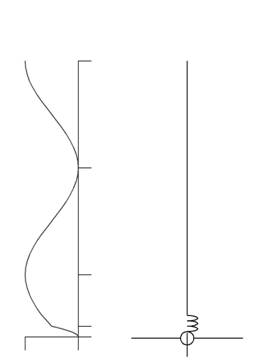Answer in a different thread for the sake of courtesy.
I like the idea, and done.
Excellent explanation in a short time. Curiously, In all my doings and reading, this approach to choking a halfwave endfed 1/4^ below the feedpoint (high voltage point) was never presented to me except perhaps with the Astroplane being choked 1/4^ below the ring.
I was even encouraged to place a choke at the coax entry point of a vertical sleeved dipole, the bottom of the lower tube, similar to the GM. (I guess I wasn't looking closely enough.) Isn't this also a high voltage point? (My 80m doublet is choked at the shack entry point.)
The sleeved dipole, this antenna took some work on figuring out the proper choking method...
As I did before, lets start out with an example of a worse case scanerio...

As we can see, large common mode currents. And choking at the bottom of the sleeve does not, in and of itself, fix the issue as we can see here with an 8000 ohm impedance choke.

My first thought would be to put the choke at the feed point of the antenna inside the sleeve if possible (likely using ferrite beads around the feed line inside the sleeve, but as we can see below, that didn't work out that well either.

What happened here is the choke actually worked as their is almost no current flow on the wire below said choke, however, mutual coupling with the wires representing the sleeve below the choke induced currents on the feed line/mast. Putting a second choke below the sleeve also does not prevent common mode currents in this case. This is how I would have choked such an antenna before today, and as we can see, it wouldn't have been very effective...
Anyway, moving on to what I did with the End Fed Half Wave antenna in the other thread. The choke is located near 1/4 wavelength below the voltage peak, or in this case, near 1/4 wavelength below the bottom of the sleeve.

At first glance this appeared to work, however, as I played with mast lengths further this happened as a worst case scenario...

As we can see, it isn't nearly as bad as above, in most cases isn't likely to cause to many problems, but their is enough currents present that I cannot guarantee that. This is with an 8000 ohm impedance choke as well. The choke is definitely trying to do its job, but some current is still getting through.
If you have this setup and are having problems, what do I suggest you do? Add another choke 1/4 wavelength below the choke above. When I model that it doesn't matter what I do with the feed line below, their are no noticeable currents flowing on it. Yes, I am saying that in a worst case scenario, you might want to use two chokes with this antenna design...
The DB







